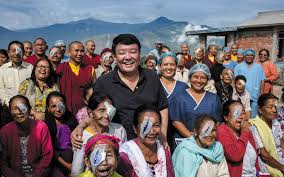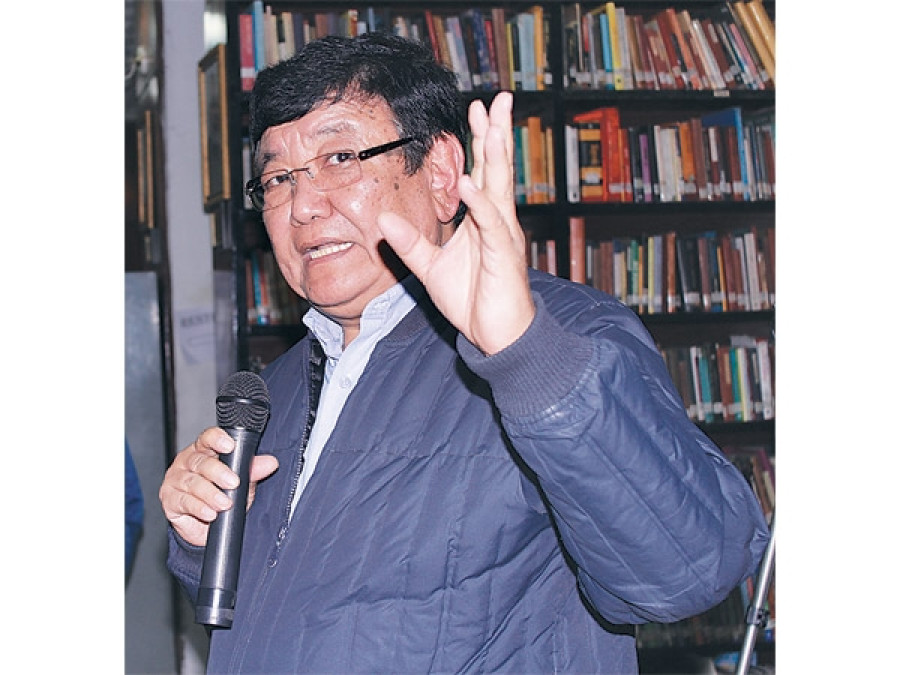
Sanduk Ruit himself came from a poor family and from an early age, he was firmly resolved to make sure the gift of sight would not depend on a patient’s means. He spent years researching and refining a new method of treatment and developed an artificial lens that is far more affordable than previous ones. In addition, his operating method is much quicker and more effective. Now, even cataract patients of minimal income have an opportunity to regain their eyesight. Sanduk Ruit regularly sets off for Nepal’s remote corners to offer the operation to poor rural patients entirely free of charge. Dennis and Patrick Weinert joined him on his travels.
In Nepal, ophthalmologist Sanduk Ruit has developed a method for treating cataracts, an eye disease that leads to blindness. The operation is quick and inexpensive so that even the poorest can afford it. It’s set an example for the world.
— and to do so with pre- and post-operative care that rivals the highest quality healthcare throughout the world.
A masterful surgeon, he can perform dozens of flawless cataract operations at eye camps over the course of a 12-hour day. Working tirelessly at the operating table, he says “the surgical chair is the most comfortable place on Earth that I have.”
Sanduk Ruit was born in Olangchungola, a remote village in Eastern Nepal — so remote the nearest school was a week’s walk away. And there were no health posts. Ruit’s sister died of tuberculosis when he was 17. This experience led him to become a doctor.
Ruit was an enthusiastic and tenacious student who excelled in his studies. After completing a three-year ophthalmology residency at the prestigious All India Institute of Medical Sciences in Delhi, India, Ruit returned to Nepal.
In 1980, while working on a Nepal Blindness Survey, Ruit met the incomparable Fred Hollows, an Australian eye surgeon who soon became his mentor. Hollows helped Ruit choose his life’s path: to restore eyesight to people who are unnecessarily blind. Ruit went on to study with Hollows at Sydney’s Prince of Wales Hospital in Australia. Hollows and Ruit held the conviction that all people with treatable blindness have the right to restored eyesight; and further, that people in developing countries deserve access to the same quality of care and technology as people in the developed world.
While in Australia, Ruit learned about a cataract micro-surgery technique using implanted intraocular lenses. He wanted to take this technique and help the poorest of the poor.
Ruit was the first Nepali doctor to perform cataract surgery with intraocular lens implants and the first to pioneer a method for delivering high-quality microsurgical procedures in remote eye camps.
In the face of heavy skepticism from other doctors in the field, Dr. Ruit tirelessly worked to prove that high-quality care could be successfully delivered in places considered squalid by western standards. Ruit’s ingenuity resulted in a sutureless surgical procedure that provides safe, top quality, and high-volume outputs at a low cost.
As a tribute to his remarkable achievements, Dr. Ruit has received a number of prestigious awards in the field of international health.
In 1994, Dr. Ruit helped found the Tilganga Eye Center. On average, Tilgaga treats 2,500 patients a week, waiving surgery fees for those unable to pay. Because many of the poor and blind cannot make it to Kathmandu, Dr. Ruit still reaches out to them by trekking into remote parts of Nepal and throughout the Himalayas. Dr. Ruit and colleagues from Tilganga have worked as far afield as North Korea, Cambodia, Bangladesh, Vietnam, Ethiopia, and Ghana.


